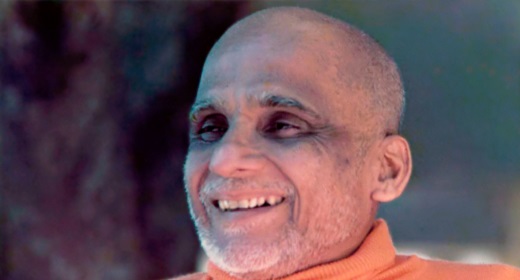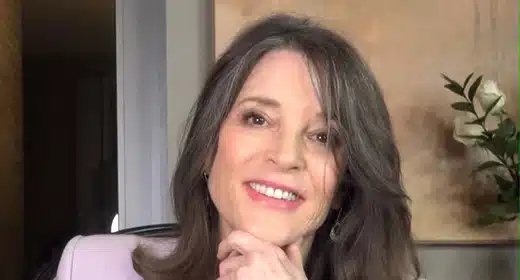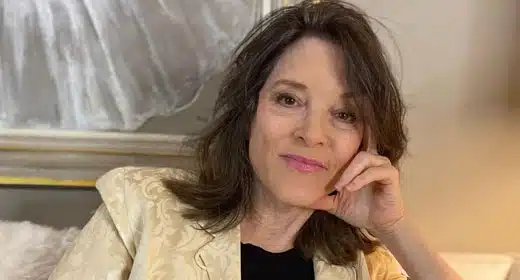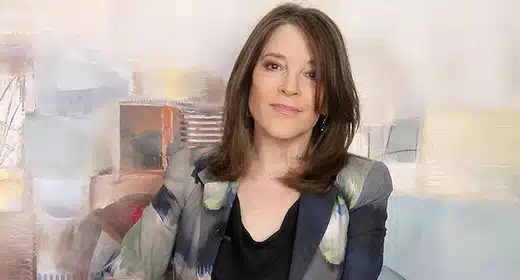by Andrea Miller: The open sky, the scent of pine, the smell of sea—summer in Cape Cod felt to Tara Brach like her true home. As she was growing up, the family’s summerhouse filled with relatives and friends, and later in her life with spouses and new children.
 For her, happiness was the shared haven of the beach, diving into the waves and somersaulting underwater.
For her, happiness was the shared haven of the beach, diving into the waves and somersaulting underwater.
But one day in 2005, two carloads of friends and family had to go to the beach without her. For twenty years Brach’s health had been mysteriously and painfully declining. Now she had a diagnosis: an incurable genetic disease affecting her connective
tissue. She could no longer run or bike or swim or walk on sand. Watching the cars pull out of the driveway, she cried with grief and loneliness. The ocean would never again be her refuge. “I realized that even if it wasn’t right now, eventually I was going to lose everything,” Brach recalls. “We all are. So how do we find the inner space of wakefulness and tenderness that’s big enough to hold it all?”
In the face of our suffering, many of us turn to quick, numbing fixes—alcohol or television, overeating or shopping. But these never get to the root of our discomfort; their effect doesn’t last and ultimately they may make our problems even worse. In
contrast, Buddhism and Western psychotherapy attempt to provide a comprehensive model of the mind and to address human suffering at its deepest level. While Buddhism and Western psychology can conflict or complement each other in myriad ways, today a growing number of professionals are appreciating the synergy of the two disciplines. Tara Brach, Barry Magid, and John Welwood are three prominent figures who believe that together Buddhism and Western psychotherapy offer a complete package for mental well-being, clear seeing, and healthy relationships.
When asked what she views as the essential common ground between Western psychology and Buddhism, Brach says it’s their understanding that suffering comes from the parts of our being that are not recognized and embraced in the light of awareness.
“What the two traditions share,” she says, “is shining a light on the rejected, unprocessed parts of the psyche.”
Brach is a clinical psychologist, the founder of the Insight Meditation Community of Washington, D.C., and the author of Radical Acceptance. The inspiration for her new book, True Refuge, was her illness.
When she was mourning the loss of her physical abilities, she became aware of a profound longing to love life no matter what. “I wanted the awakened heart,” she says, “which would allow me to embrace this world—the living world, the dying world, the
whole thing.”
Brach calls that kind of acceptance and inner freedom “true refuge.” It’s true, she writes in her book, “because it does not depend on anything outside ourselves—a certain situation, a person, a cure, even a particular mood or emotion.”
According to Brach, true refuge has three gateways: truth, love, and awareness. “Truth,” explains Brach, “is the understanding or realization that comes out of being present with the life that’s right here and now. Love is bringing presence to the domain of the heart, the domain of relationships, and the realization that arises out of that is interconnectedness. Then awareness is when we bring presence to the formless awakeness that is right here. When we discover the refuge of our own formless being, that’s awareness waking up to itself.”
“Truth, love, and awareness” is Brach’s secularized articulation of the three jewels of Buddhism—the teacher, Buddha; the teaching, dharma; and the community, sangha. She’s opted for this nonreligious language because she feels the search for true refuge and its three gateways are universal. In the context of Buddhism, truth is dharma, love is sangha, and awareness is Buddha. But in Christian terms, claims Brach, “the Father is awareness, the Son is the living truth of this moment-to-moment experience, and when awareness and moment-to-moment experience are in relationship, there is love, which is the Holy Ghost.”
In her own life, Brach began regularly implementing RAIN when she realized how much separation she created between herself and others whenever she judged, resented, or blamed people or situations, even subtly. To explain how RAIN is practiced, she offers an example from her own life: Brach went on holiday with her family and found herself “down on everybody for all their different neuroses, even the family dog for begging at the table.” So she put on her parka, headed outside for a walk, and started with “R,” recognize. Annoyed, irritated, blaming—she recognized how she was feeling. Moving on to “A,” she allowed those feelings to be there, without adding more judgment. Then she engaged in “I” and investigated the tight knot in her chest. “I asked that tight knot what it believed,” says Brach. “And its views were that nobody was cooperating with my agenda for having a harmonious time and I was falling short. It believed that my son is the one who’s not doing such-and-such and it’s my fault that so-and-so is not getting along.”
Brach breathed into the place that was upset and sent a message of gentleness and kindness inward. That enabled some space, some tenderness, to open up inside. Then the “N” of RAIN—resting in the natural state of awareness—was able to unfold effortlessly. Now when she brought to mind the different members of her family, Brach could still see their neuroses but no longer felt aversion or judgment. These family members were her loved ones.
RAIN invites a shift in identity, says Brach. It helps transform an angry, blaming person into a tender presence that gently holds whatever’s going on.
“That’s the gift of Buddhism,”
Brach concludes. “The whole fruit of our path and practice is to wake up from who we thought we were, which is usually separate and deficient in some way, and to rest in the vastness of heart and awareness that is our true nature.
To help us connect more deeply to our own inner life, with each other, and with the world around us, Brach teaches a technique called RAIN. This acronym, originally coined by Vipassana teacher Michele McDonald, stands for:
Recognize what is happening;
Allow life to be just as it is;
Investigate inner experience with kindness; and rest in the
Natural state of awareness or nonidentification.
When couples coMe in to see psychotherapist John Welwood, they often begin by complaining, “We’re so different.”
“Well, guess what?” says Welwood. “That’s called relationship.” Both globally and personally, we tend to feel threatened by difference. Yet it’s possible to celebrate it and learn from it. Welwood is a longtime Vajrayana Buddhist who is the author of groundbreaking books such as Perfect Love, Imperfect Relationships and Toward a Psychology of Awakening. Like Brach, he believes that humanity’s fundamental problem is that people are disconnected from their true nature. He adds that while this is a spiritual articulation, it is also accurate psychologically. He believes that this disconnection from our true nature happens in relationship, starting when we are children. Growing up, we are dependent on parents and other adults who are themselves disconnected. Through neglect, abuse, or simply lack of attunement, they transmit disconnection to us. “This is the beginning of relational wounding,” says Welwood. “The child doesn’t feel fully seen, valued, or loved for who they are. Now, you could say, ‘Well, it’s an imperfect world and nobody gets the ideal love,’ and that’s probably true, but not getting it does leave psychological scarring.”
For some people, the wounds are minor and readily workable; for others, the
wounds are deep and lead to complete dysfunction. Relational wounding creates a sense of deficiency inside, which we try to compensate for by proving that we really are loveable—that we really are good or strong or smart. Theoretically it is possible to heal these wounds without the help of a therapist, but practically speaking, says Welwood, “it’s not realistic—just the same way the spiritual path isn’t easy to do on
your own.”
The healing power of therapy, he asserts, lies largely in the relationship between the therapist and client. It’s so rare for us to experience being truly seen and related to by another human being that the therapeutic relationship “is like stepping into a healing bath,” he says. “You’re suddenly in an environment where it’s all oriented toward supporting you, hearing you, being with you, valuing you. Because that’s so much needed in our body and mind, we soak it up.”
But is therapy’s focus on me and my personal story at odds with the Buddhist teachings of no-self? Welwood doesn’t think so. Most of us believe in a false self—the conditioned separate self or ego structure, which defends itself against threats and is a purely conceptual construction. When Buddhism says there is no self, that’s what it’s referring to. But then, says Welwood, there is the true person. open and boundless, it grows out of the understanding of no self, yet has the capacity to lead a full, personal life that’s attuned to relative reality. “If you just live in the realm of no self,” asks Welwood, “then how do you work with relative situations? The essence of our humanness is relatedness. If you’re in a human relationship, you’ve got to process that relationship. You and your partner have got to talk about what you each like and don’t like, what is hurtful, and what is most important or meaningful to you.
From the point of view of pure being, there’s no self and no other—there’s just being. But on the level of the person, you’re different than I am. If we’re going to be able to relate to each other, we really have to get know each other. That’s part of learning to be in a relationship.”
When asked why intimate relationships so often press our buttons, Welwood turns the question around. “What is the button?” he says. “The button is our relational wounding. If your buttons are pressed, the question is, what is getting triggered? So instead of focusing on the other person and what they’re doing to you or not doing for you, focus on what aspect of the wound is getting touched.” If you understand how things that happened one critical ingredient for healthy intimate relationships is a realistic sense of their limitations: relationships cannot in and of themselves fill the hole of love created in childhood. In Perfect Love, Imperfect Relationships, Welwood teaches that we need to learn how to be there for ourselves and recognize that our lives are held in an absolute love. To tap into this love, he offers
this six-step exercise:
(1) Settle into your body. Sitting or lying down, take a few
deep breaths.
(2) Turn your attention toward some way in which you feel
cut off from love in your life right now and see how that lack
feels in your body.
(3) Without trying to get anything from anybody in particular, open to the pure energy of your longing to feel more connected. Deeply feel the energy in this longing.
(4) See if you can feel the longing in your heart center and
soften your crown center, which is at the top and back of your
head.
(5) Notice if there is any presence of love available now. Don’t
think about it too hard or fabricate what isn’t there. But if there
is some love or warmth at hand, let it enter you. Give yourself
ample time to be with whatever you’re experiencing and keep in
mind that the presence of absolute love may be very subtle, like
being held in a gentle embrace.
(6) Instead of holding yourself up, let love be your ground.
Allow yourself to melt.
Welwood came up with this practice because of his own needs. Working with it, he quickly felt profound changes—so much so that he believed he’d never again need love from people in the same way. “I experienced a new kind of trust and relaxation in knowing that I could have my own direct access to perfect love whenever I needed it,” he writes. “My investment in grievance diminished, along with tendencies to expect others to provide ideal love.”
Yet this practice did not prove to be a panacea—nothing is—and Welwood eventually found himself slipping back into old relational expectations. It did, however, leave him with the genuine knowledge that something else was possible. “This served as a polestar,” he concludes, “in guiding me toward seeing what I still need to work on to free myself further.”
When people ask Barry Magid what the difference is between psychoanalysis and psychotherapy, he wryly asserts that psychoanalysis doesn’t help anyone.
“This dovetails with the idea of no gain in Zen,” says Magid, who is a psychoanalyst, a psychiatrist, and the founder of The ordinary Mind Zendo in New York. “psychotherapies in a broad sense can be thought of as problem-solving techniques in the past are feeding your feelings in the present moment, then you might find the situation to be more workable.
Marriage, in Welwood’s words, can be like a crucible or alchemical container in which substances are mixed together and transformed. In marriage as a conscious relationship, the container is the commitment to stay with it no matter how difficult it is, the willingness “to bring awareness to whatever is going on, rather than acting out your conditioned patterns from the past. You take everything, all the challenges in the relationship, as opportunities to become more fully awake, to become more fully present, loving, and giving.” The transformation generated between the two people leads to a deep transformation within each of them.
Zen is not a technique and is not a means to an end. Zen may literally be the only useless thing we do, and this uselessness is actually the essence of Zen being a religious practice. We experience the moment, ourselves, and life itself exclusively for its own sake, and this is the basis of reverence.” Zen is an expression of who we are. Likewise, psychoanalysis—the classical technique developed by Freud—is an open-ended process in which we stay with our experience without any idea where it’s going to lead. This is the opposite of self-help or self-improvement. Yet paradoxically, it’s profoundly transformative. once we really give up trying to change, real change can occur.
According to Magid, both Zen and psychoanalysis stir up feelings—good and bad—and offer a stable container in which to face them. on the analysis side, the container is the analyst-client relationship. In the zendo, the container is the structure, the setting, and the sitting. Zen students literally sit still with whatever comes up, whether it’s physical or emotional. Both disciplines, in essence, are about staying with a bigger range of experience than we usually want to tolerate; they just do it in two different contexts.
In Magid’s opinion, “No matter what anyone says, the reason we come to Buddhist practice is that at some level we’re doing it to get rid of an aspect of the self we don’t want to deal with. We might say our aim is to become wiser and more compassionate, but usually what we really want is to get rid of our anxiety, our vulnerability, our anger, and those aspects of sexuality that are troublesome. practice then becomes a way of having one part of ourselves fighting another—one part is trying to throw another part overboard in the name of selflessness.”
When people practice meditation in this way, says Magid, “something about them ends up feeling dead. They feel like they’ve practiced for a long time, but have failed because they’ve never been able to get rid of…fill in the blank.” Yet practice isn’t intended to get rid of anything. practice should be a way to let
everything stay just as it is.
In his book Ordinary Mind, Magid says practicing zazen for the purpose of affecting change is like exercising because you think you’re overweight. If your motivation is to squelch an aspect of yourself that repels you and to actualize an image of yourself that you desire, then you will have to exert continual effort. Yet if you practice or exercise because you feel that doing so is a natural part of the day and because somehow it makes you feel “more like yourself,” then no gaining idea will be necessary to motivate you.
As Magid sees it, neuroscience has been used to fuel the idea that meditation is a means to an end, and he finds this worrisome. “If we think that what we want is to be in a particular brain state, then meditation becomes a means to get into that state, and we start asking if meditation is indeed the most efficient means,” he says. “Maybe we start to wonder if we couldn’t just bypass a lot of that really boring sitting by taking the right pill. And now we’re down a road of thinking that what we’re trying to do is get into a particular subjective state and stay there. But in meditation—and in analysis—we’re trying to learn to not prefer, to not cling to any one state. Similarly, happiness or enlightenment is not something that takes place in our brains. Happiness and enlightenment are functions of a whole person living a whole life.”Yet in the face of depression and anxiety, Magid does not eschew medication. The real issue “is what someone needs in order to sit still and stay with their own experience. If someone is obsessively ruminating or chronically anxious, that blocks any other kind of experience.” So the use of prozac or another medication may allow some people to experience states of mind beyond the ones they’re stuck in. “I think people are often worried about not being able to do it all on their own or being dependent on medication,” Magid adds. “But nobody’s doing anything on their own. There’s no such thing as autonomy. To enable us to practice, we all rely on the group, the teacher, the tradition—all sorts of things. If for some people medication is what enables them to practice, I have no problem with it.”
Charlotte Beck, Magid’s late teacher, received the Japanese name “Joko” from her Zen teacher, Maezumi Roshi, yet she did not continue the practice of giving students Buddhist names. Magid, however, has adopted the tradition—with a twist. In a ceremony, he gives his students not a special, foreign name, but rather their real name. The one they already use every day. This is his reminder that practice and ordinary life are one and the same.








































